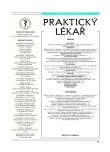Physical activity and cancer prevention
Může pohybová aktivita ovlivnit vznik zhoubných nádorů?
Prospektivní epidemiologické studie probíhající delší dobu ukázaly, že vedle blahodárného vlivu pohybové aktivity na prevenci ischemické choroby se objevilo i podobné působení na výskyt některých druhů maligních nádorů, které lze připisovat pravidelnému provádění pohybové aktivity ve střední a vyšší intenzitě. Jako nejvýznamnější se ukazuje epidemiologická evidence snížením rizika u karcinomu tlustého střeva a prsu. Menší nebo neurčitá průkaznost se projevuje u postižení prostaty a nejmenší je v případě plic.
Klíčová slova:
pohybová aktivita – prevence zhoubných nádorů – karcinom tlustého střeva, prsu, prostaty a plic.
Authors:
M. Máček 1; J. Máčková 2
Authors‘ workplace:
Klinika rehabilitace 2. LF UK a FN Motol, Praha
přednosta doc. PaedDr. P. Kolář
1; Subkatedra tělovýchovného lékařství IPVZ, Praha
přednosta doc. MUDr. J. Radvanský, CSc.
2
Published in:
Prakt. Lék. 2005; 85(2): 78-82
Category:
Of different specialties
Overview
Prospective studies were carried out to examine the relationship between physical activity and the incidence of cancer. Convincing evidence exists for an association between physical activity and the prevention of colon and breast cancer. Probable evidence can be found in prostate cancer and less so in lung cancer.
Key words:
exercise – prevention of cancer – cancer of colon, breast, prostate and lungs.
Labels
General practitioner for children and adolescents General practitioner for adultsArticle was published in
General Practitioner

2005 Issue 2
- Memantine Eases Daily Life for Patients and Caregivers
- Hope Awakens with Early Diagnosis of Parkinson's Disease Based on Skin Odor
- Metamizole vs. Tramadol in Postoperative Analgesia
- Memantine in Dementia Therapy – Current Findings and Possible Future Applications
- Metamizole at a Glance and in Practice – Effective Non-Opioid Analgesic for All Ages
Most read in this issue
- Brachyspirae – agents of intestinal spirochetosis
- The diabetic foot and hyperbaric oxygen therapy
- Treatment of traumatic lesions of the brachial plexus
- Inborn anomalies of the coronary arteries: three case reports
